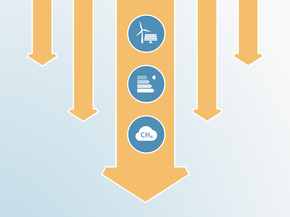Pledges And Targets
Summary table

Paris Agreement target
In June 2016, the Norwegian parliament approved the goal of achieving “climate neutrality” by 2030 by providing climate reductions equivalent to Norwegian emissions starting in 2030 through “the EU emissions trading market, international cooperation on emissions reductions, emissions trading and project-based cooperation” (Phys, 2016; Storting, 2016). However, this target is not adopted by the government and not enshrined in law (Hermansen & Lahn, 2019). Also, whereas Norway stated in its first NDC it would adopt a binding carbon neutrality before 2030, the updated NDC includes no reference to such a goal. Therefore, this goal is not reflected in our assessment.
For information on Norway’s original submission in 2016, see our comparison assessment of Norway’s NDCs.
2020 pledge
Kyoto Protocol second commitment period (2013–2020)
Norway's target under the Kyoto Protocol’s second commitment period (2013–2020) is to reduce average GHG emissions (excluding LULUCF) by 16% (QELRO of 84) below 1990 levels, equivalent to about a 41% reduction in the year 2020, taking into account the emissions from 2013 and 2014, and assuming a linear pathway reduction from current levels. Under the Kyoto Protocol’s Land Use Change and Forestry accounting provisions, CAT estimates that Norway is likely to get an annual credit equivalent to about 1.7–3.4% of 1990 GHG emissions excluding LULUCF over the period 2013–2020. This would result in a 26–39% reduction of GHG emissions excluding LULUCF in the year 2020. The actual level of domestic emissions reductions would also depend upon emissions trading and the level of Joint Implementation (JI) and CDM (CER) units acquired or held.
With currently implemented policies and measures, Norway’s emissions (excl. LULUCF) are expected to decrease by 5-10% by 2020 compared to 1990 levels, reaching emissions of 47-49MtCO2e. According to these projections, Norway will not be able to meet its Kyoto target (see figure) without acquiring emission units internationally. National policy is to reduce two thirds of its GHG emissions domestically and to purchase emissions units for the rest, to the tune of up to 30 million credits during the Kyoto Protocol second commitment period.
Copenhagen Pledge
Prior to adoption of the Kyoto Protocol second commitment period target, in 2010 Norway pledged to reduce emissions by 30–40% below 1990 levels by 2020 with the 40% reduction target conditional on global action.
Long-term goal
In June 2017, the Norwegian Government adopted the goal of Norway becoming a “low-carbon society” by 2050. This goal, ingrained in the Climate Change Act, has been quantified as an 80–95% reduction in GHG emissions from 1990 levels. The specific targets are to be submitted by Norway’s government to the parliament every five years starting in 2020 and will be consistent with Norway’s NDC (Ministry of Climate and Environment, 2017). The political platform adopted by the government after the Christian People’s Party joined the ruling coalition, stated that this goal would be increased to a 90-95% emissions reduction (Government of Norway, 2019). However, the government has not yet modified the Climate Change Act to incorporate this new target.
Further analysis
Latest publications
Stay informed
Subscribe to our newsletter




